Last Updated on June 24, 2019 by PowersToTravel
The next day was my birthday, and what a day it was. The village of San Pedro, and the people called ribereños, was the destination of our morning adventure. I have since learned that ribereños means river people and are not a distinct ethnic group but rather indigenous people who have migrated to the area and make their livelihood on the river.
The usual rickety planks and steps led from the low water level up the mud cliff to the village. Since the water goes down slowly throughout the season, the villagers would nail on a new section of rickety steps each ten feet or so.
The village consisted of perhaps fifteen or twenty shacks on stilts situated around a large square of grass – actually the soccer field. Children and woman sat clustered on the open porches, cooking and doing hand laundry, and the men were active, but not terribly busy in the heat and humidity, carving new canoes.
We saw strips of cayman meat from a very large animal drying on a rack between two houses. We were invited into one home to see how they lived. One bare room contained the TV, another served as the kitchen, and a third contained the beds and hammocks. A hen was at home in a box in the corner of the kitchen, and a teenage boy was frying fish. Faded old advertising posters hung on one wall of the “living room”. The rooms were empty and swept clean. I’m sure if we had visited another, less prepared home, the residue of life would have been scattered around.
Around the wall of the living room we could see the marks left from earlier high-water seasons – marks about one or two feet above the floor level. We didn’t ask where the family went when the water rose so high.
The village had one generator, and electric poles lined the soccer field. Older children wandered about, some with water pots on their heads, coming from the village’s only clean water source, the pump. We soon learned that usually school is in session, and usually we would have been greeted by the teacher and invited in to the classroom, however today the teacher was at a meeting in Nauta and there was no school. If we wanted, we could visit the preschool. How could we pass that up?
The preschool teacher invited us into the one-room classroom, seating the eight of us on a narrow bench at the front of the classroom. Our guide translated for us. He singled out individual children, “What do you want to be when you grow up?”
“I want to be a nurse,” said a little girl, in Spanish.
“I want to be a teacher.”
“I want to make video games.”
The best was last. “I want to be a tourist,” announced a five-year-old, waving at us.
The children sang us a song, and then asked us to sing. There we were, four Chinese and four Americans, singing “Old McDonald had a Farm”, with the guide periodically translating. It was so very entertaining for both us and the preschoolers. Suddenly they all stood up, and sang “Happy Birthday”, in Spanish, to me. Greg has some of it in video.
Having researched on the Internet the appropriate gifts to bring to an Amazon village, Greg and I had brought quite a number of magnifying reading glasses. The Cattleya website asked us to bring such gifts, and so we did. They recommended no toys for children, just helpful aids for teachers or adults. With my aging eyes, I felt more sympathetic to the aging adults and their lack of resources.
However, with no grade-school teacher present, our guide seemed uncertain what to do with our reading glasses. We were the only guests who had brought gifts. Our guide walked us from home to home, asking, in Spanish, “Do you have bad eyes? Do you need magnifying glasses?” Almost everyone answered “Yes!” probably to get the free gift. Children tried to prove they couldn’t see, but older adults were the only winners.
What a splendid visit. In a way, I felt as if I were a part of a “Adopt a child” commercial, however there was no sign of hunger and disease here. The children were adequately dressed, receiving education, bubbly and happy to see the strangers. They didn’t have computers, but did have TV, a soccer ball, and dreamed of a life in the city. From what I had seen in the squatter villages, the Amazon city life was not necessarily an improvement to their life in the village. Was this village representative? From what we saw from the river’s edge as we toured the river for a week, I felt that it probably was.
I had read that the Amazon wildlife experience was lackluster compared to the Costa Rica experience. After having spent several days on the water, I have to agree. However, what the Amazon lacks in viewable animal experience, it makes up in Insects, Reptiles and the wonders of the unique Human experience.
We returned to our ship to our typical Amazonian fare: catfish appetizer, then chicken with ravioli and broccoli.
Then with typical Amazonian flare we rested in our King-sized double bed for our afternoon siesta.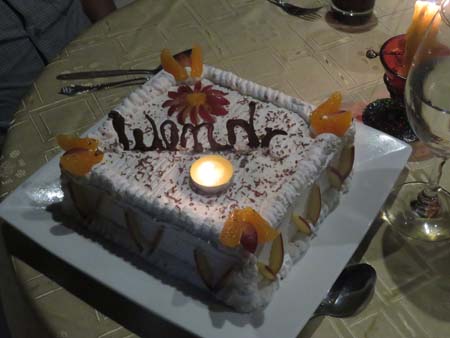
The days began to take on a sameness, as at 4 pm we went out once again in the motorized skiff up a creek to look for wildlife. This time we glimpsed a sloth, nearly out of sight, in the top of a huge tree.
Dinner was a change: pork chops. Dessert was a specially-prepared birthday cake for me!
Check out this article of mine too:
Peru Travel Blog – Itinerary, Reviews and Diabetic Travel Tips

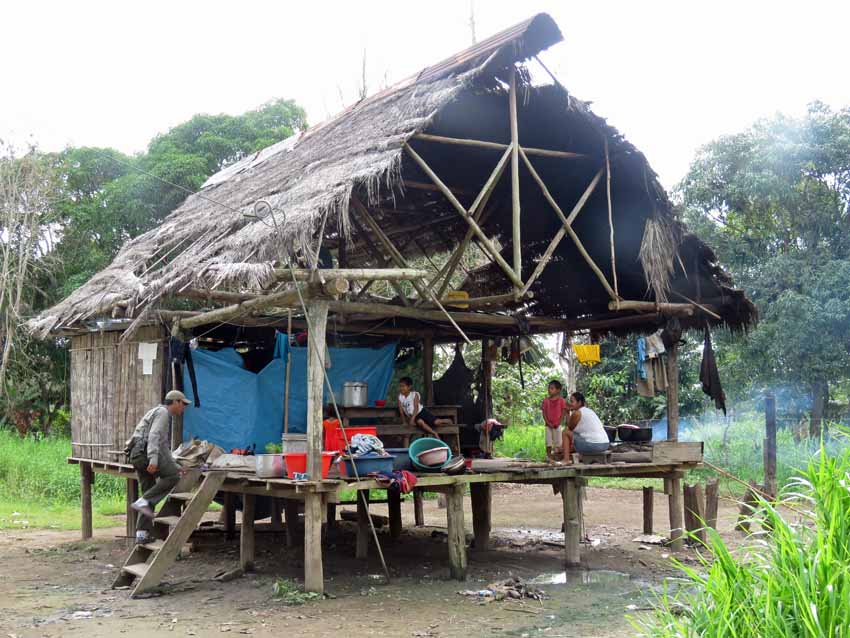
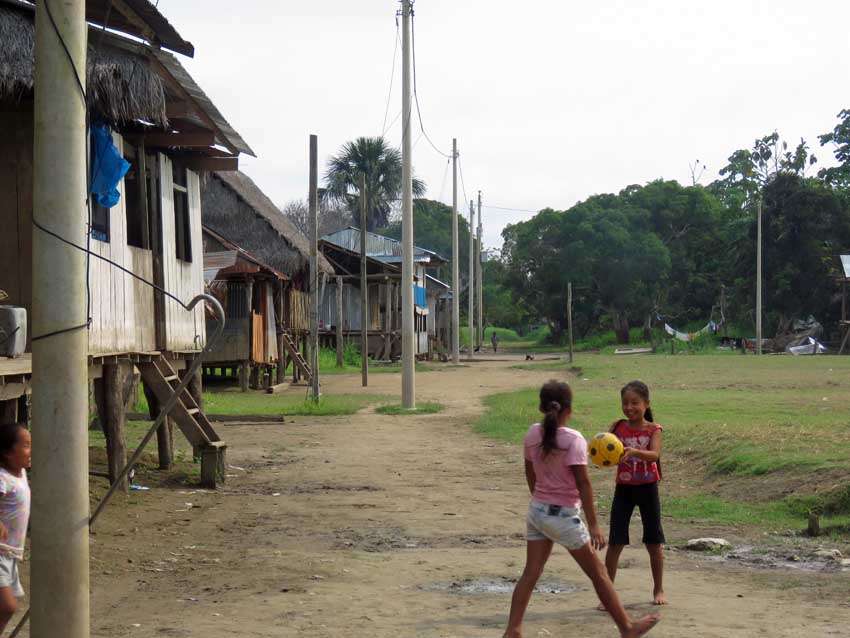
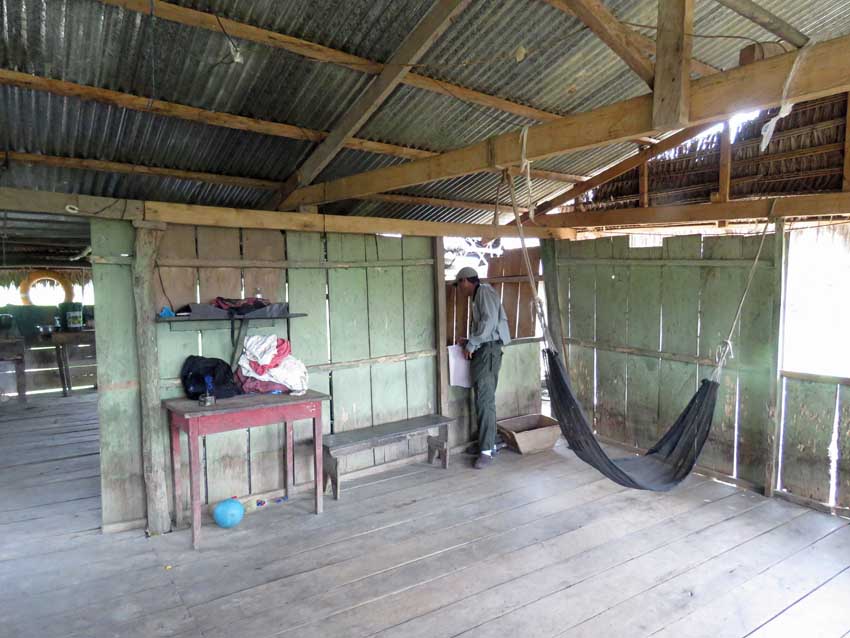
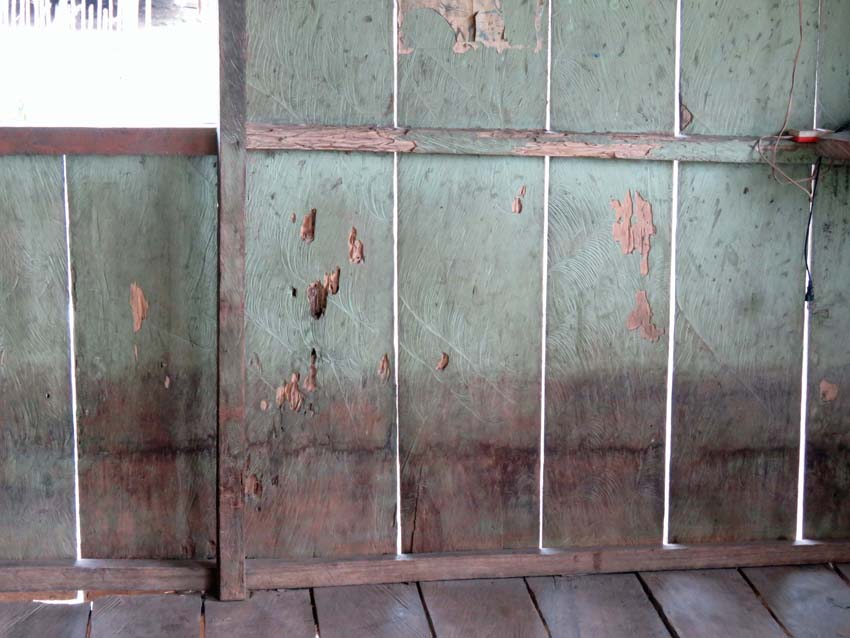
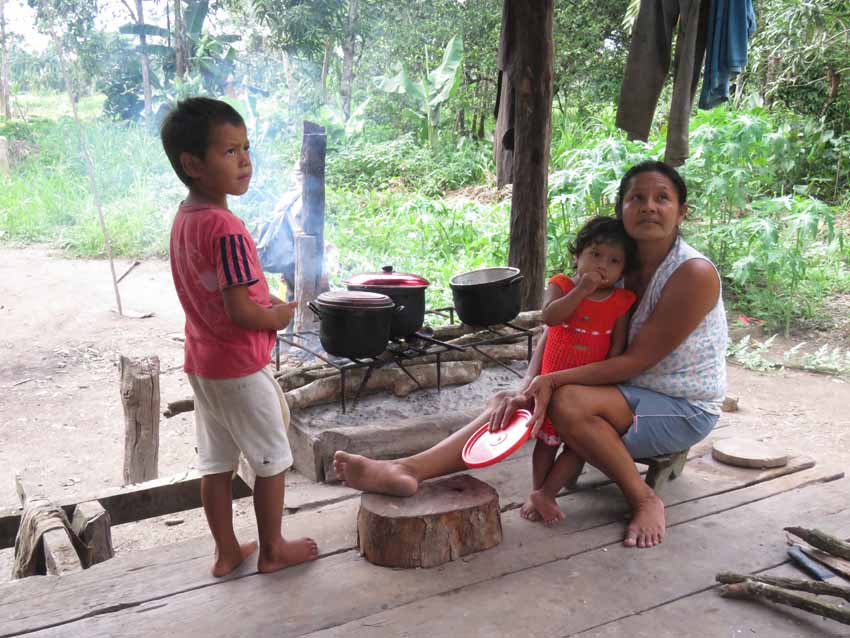
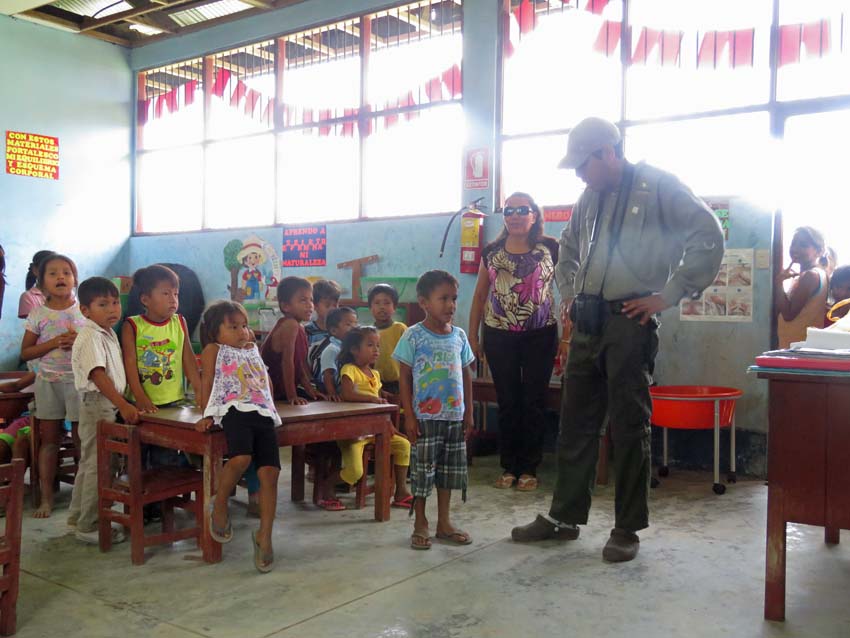
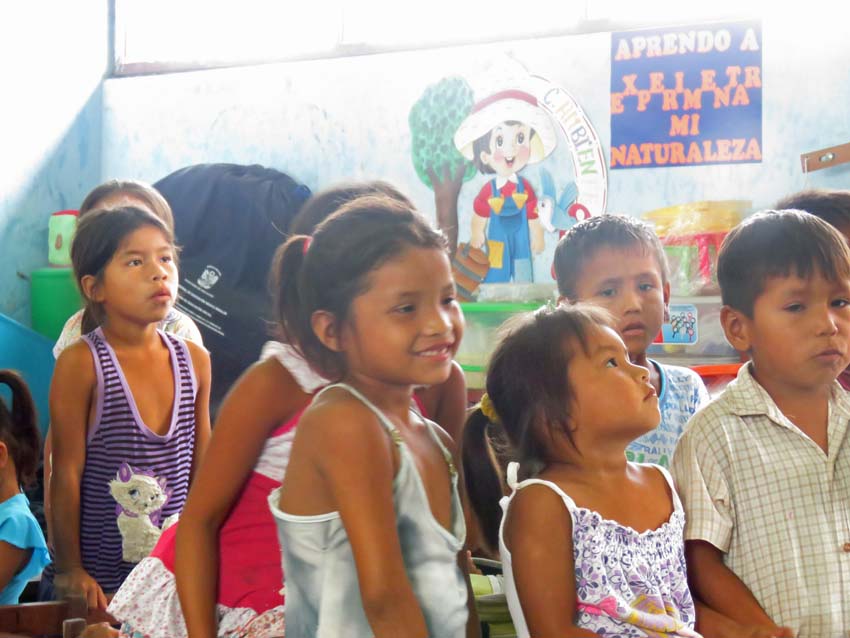
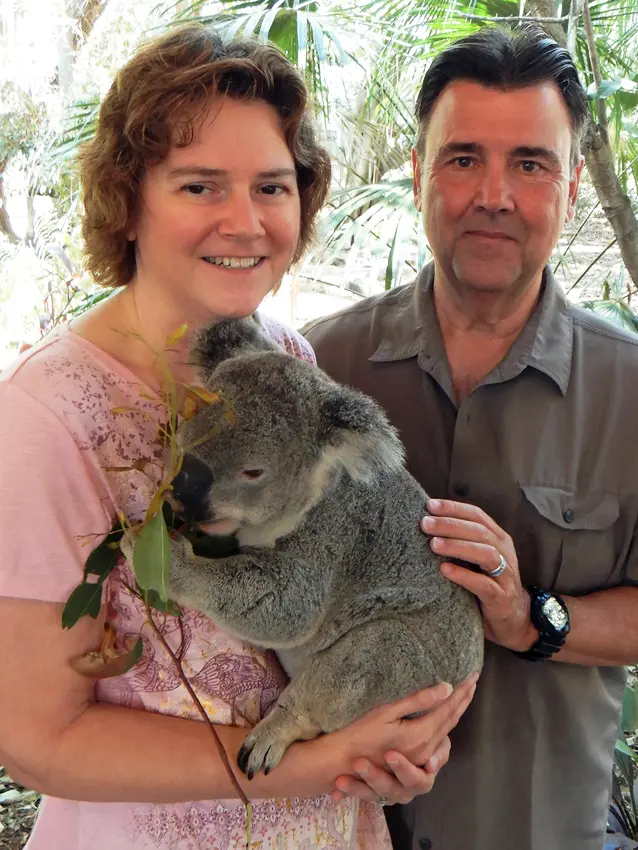
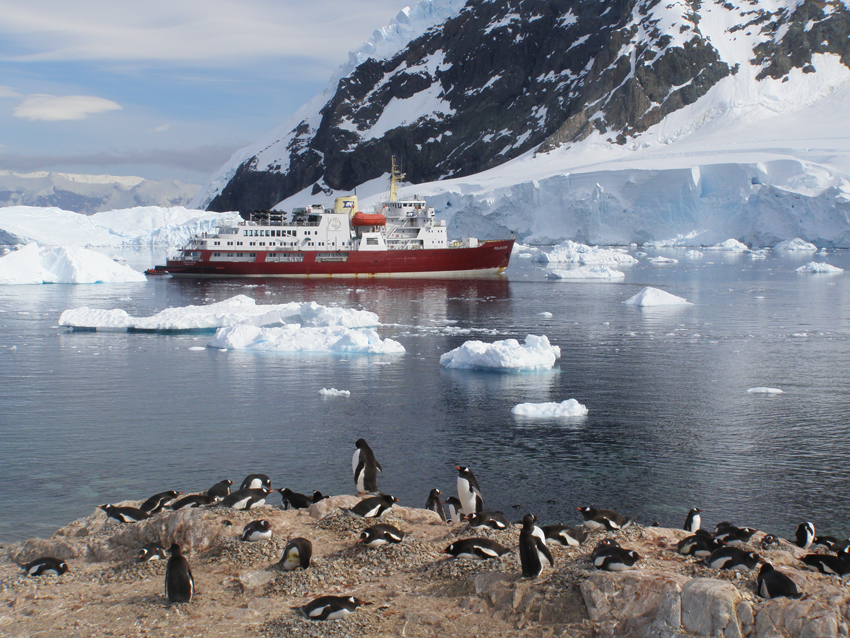


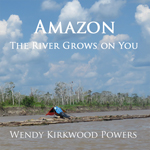
Happy Birthday Wendy! Looks like a wonderful, wonderful time!